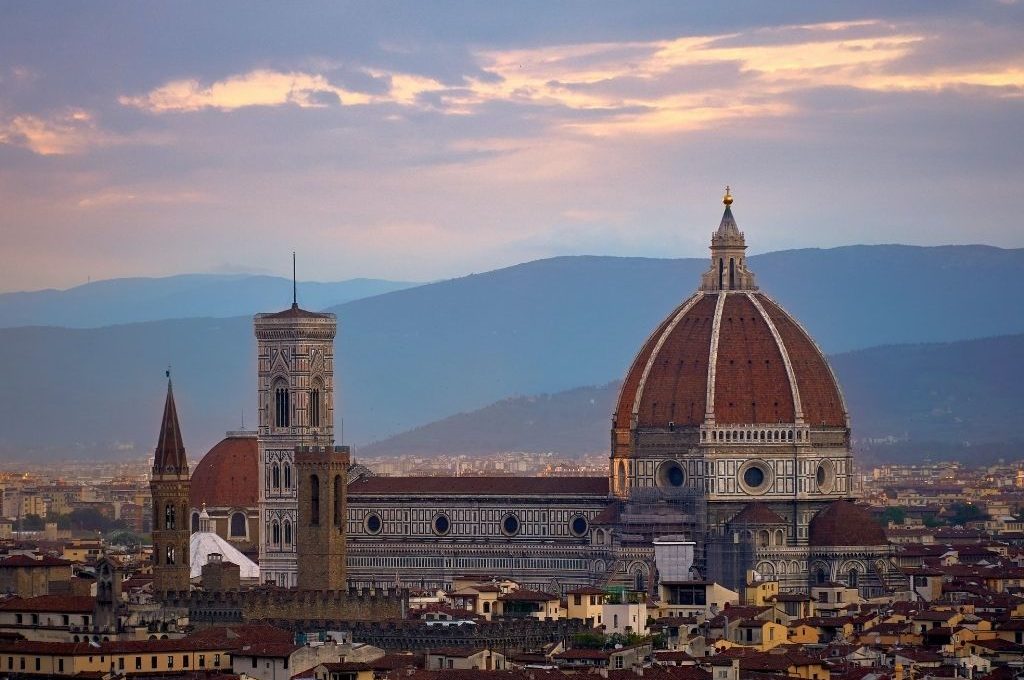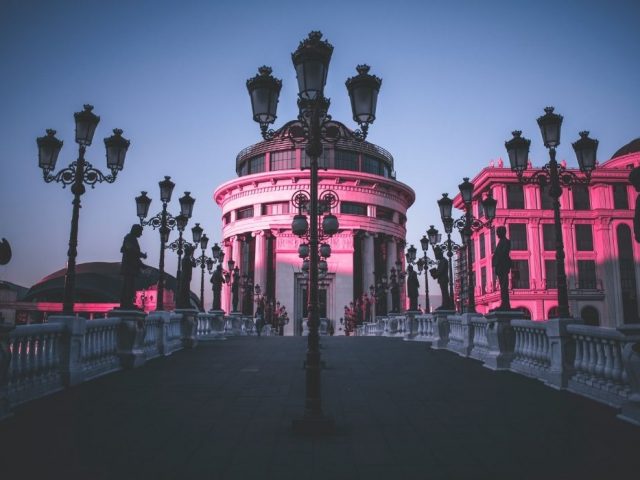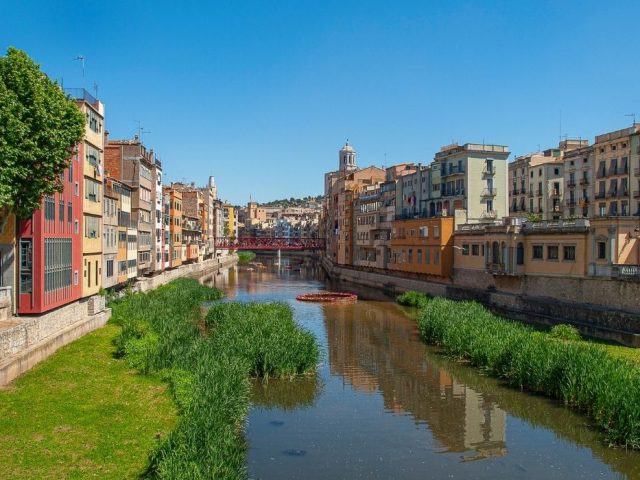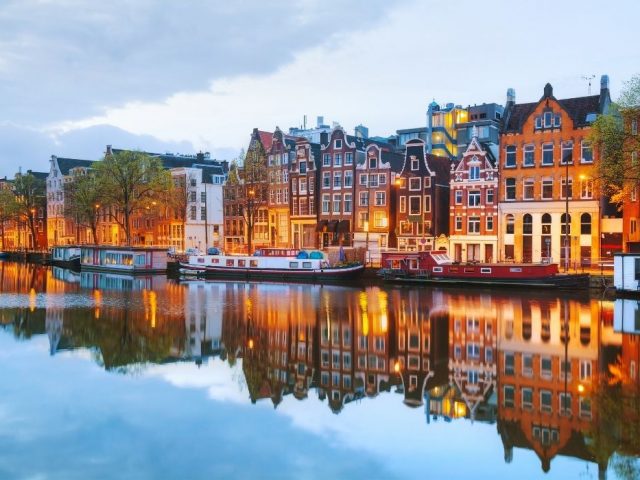“Aristotle was wrong; the universe was made out of five elements, not four: Earth, Air, Fire, Water, and Florentines!”
Pope VIII Boniface described Florence with these words. Florence is a city that will captivate you with its cuisine, wine, air, music, people, and, briefly, its soul.
The Romans founded Florence in the 1st century BC. Its original name was not even Florence, but Florentia. The city was a Roman settlement along the Arno River, which is now at the centre of Italy. It was one of the places where trade was thriving. Over time, Florence grew and developed into a place where European art, science, and politics flourished. Many greats have passed through here: Michelangelo, Da Vinci, Dante…
🛎️️ Reminder: To explore Florence step by step with your digital tour guide, don’t forget to download Piri Guide! 😊
How Did Florence Get Its Name?
In the square of Florence, there are two marble-made obelisks. The flower there is the emblematic flower of Florence: the iris. The name of the city is also connected to this flower. The city’s old name was Florentia, and later, it became Fiorenza. Fiora also means “flower” in Italian. That’s why when you walk around the city, you can see a lot of flowers similar to this.
Where is Florence?
Florence is the capital of Tuscany, a region in central Italy. The city’s population is approximately 400,000, making it the largest city in Tuscany. It is known for its rich history, stunning architecture, and world-renowned art.
How to Go to Florence?
Plane: Florence has an airport named Peretola Airport (FLR), which is located just outside the city. You can fly to Florence from many cities around the world. Then, take a taxi or public transportation to your destination within the city.
🚌 Shuttle buses to reach the city centre.
Train: Florence has a major train station named Firenze Santa Maria Novella, located in the city’s centre. You can take a train from many cities in Italy and Europe, including Rome and Milan.
Bus: The city is also well-connected by bus to other cities in Italy and Europe. Popular bus companies, such as FlixBus and Eurolines, offer frequent and affordable services to Florence.
When to Go to Florence? Which Season is the Best?
The best time to visit Florence is in spring (April-June) or autumn (September-October) when the weather is mild, and there are fewer crowds. These seasons also offer the best conditions for sightseeing and outdoor activities.
As you might expect, you may not find vibrant nightlife in Florence, as the city has limited nightclubs. However, if you’re here, you could make a side trip to Venice by train on the Florence-Venice line or even to Milan if you have the time. The best option is to allocate a long time for Italy. This way, you will visit Rome, Florence, and Venice together.
Must-Visit Places in Florence
Florence is a prosperous city in terms of both history and culture. So, there are many places to see and experience. From Florence’s cuisine to its way of life, and from its most beautiful buildings to the hidden stories of these buildings…
We’ve made a list of must-visit places in Florence. Yet, we should remind you that you can find more on Piri Guide mobile app. Piri Guide detects your location, offers you the best travel routes, and starts telling you the hidden stories of wherever you are. All you have to do is to get your headphones and follow the path at your own pace. Then, don’t set out for your trip before downloading the digital travel guide! 😊
Basilica of Santa Maria Novella
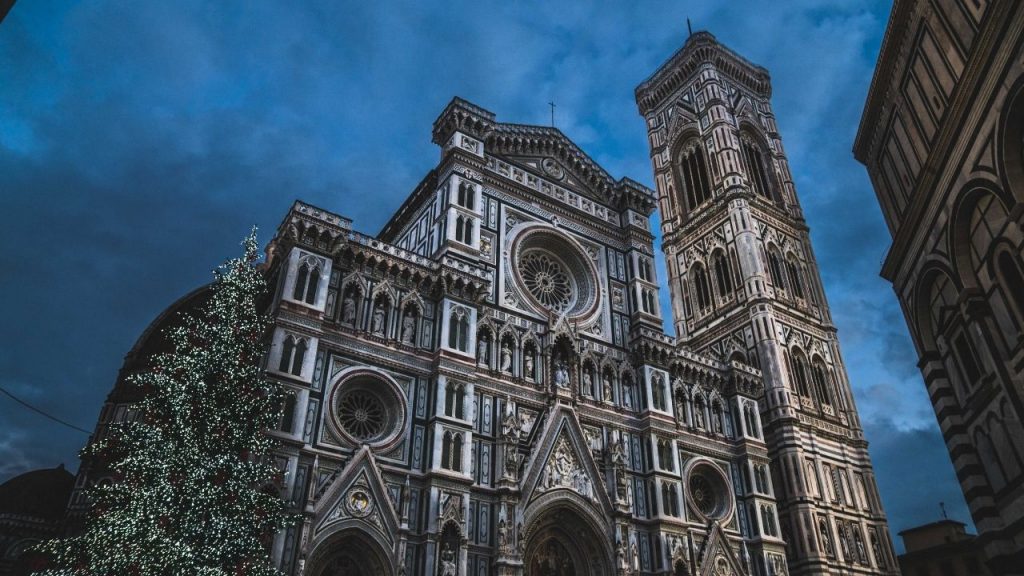
The Basilica of Santa Maria Novella is one of the most important churches in Florence. It is referred to as a basilica rather than a church because it was built by a religious community. Dominicans built the church in the late 13th century. This had been living in a region that was then a vineyard since the beginning of the 13th century. This is why the church was dedicated to Mary, the “Mother of the Vineyards”. In the late 13th century, they decided to renovate the church and build this beautiful Gothic-style structure.
As you can see inside, the church’s original features have been preserved. There are enchanting works of art, such as Masaccio’s fresco of the Holy Trinity, Brunelleschi’s cross, or the paintings that decorate Domenico Ghirlandaio’s altar. If you want to visit the church and see its magnificent works of art, it is open to visitors every day except Sunday mornings. However, you need to buy a ticket to enter.
Palazzo Strozzi
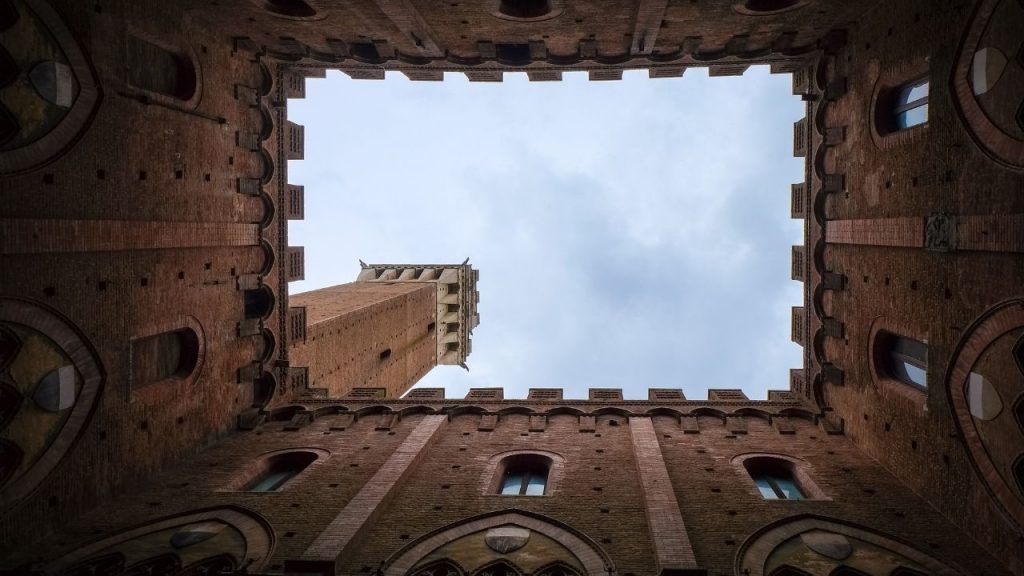
This building is one of the finest examples of Renaissance-style palaces. The Renaissance was a time that saw the revival of ancient Greek and Roman culture. The word “renaissance” itself means “rebirth.” At the core of the Renaissance movement was humanism, or umanesimo in Italian.
The building was once the home of a wealthy banker family named Strozzi. The Strozzi family was a rival of another famous family, the Medici. At the time, Filippo Strozzi spent all his money on building the palace you see today. Although the exterior of Palazzo Strozzi appears rough, its inner courtyard is definitely stylish. It embodies all the features of the Renaissance, including columns with old-style capitals and arches made of just two colours: white and grey. The Strozzi Palace is a public building where temporary exhibitions are held today.
Piazza della Repubblica
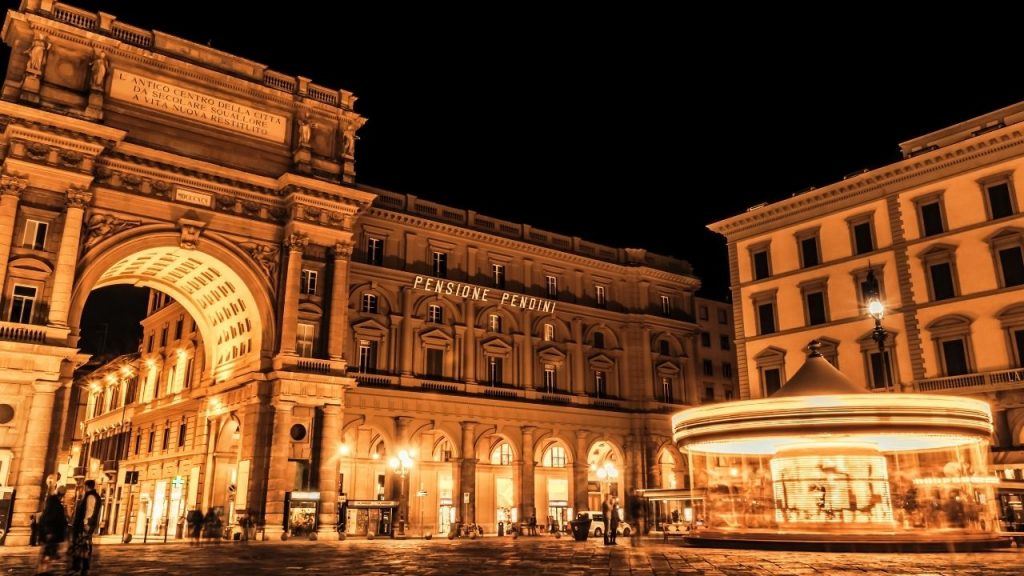
This is the city’s main centre. All of the buildings here date back to the 19th century. In comparison to other areas in Florence, the buildings here seem modern. But this is the city’s true oldest centre ground.
There were many old buildings here, and not all of them could be preserved. In short, it was not a very good environment. It was a spot where poor people lived. When Florence was declared the capital of Italy in 1865, the city government launched large-scale restoration work. Old buildings underwent demolition, and the construction of new ones took place. The Piazza della Repubblica, formerly Piazza del Mercato Vecchio or the old market square, has been completely renovated.
Medici Palace
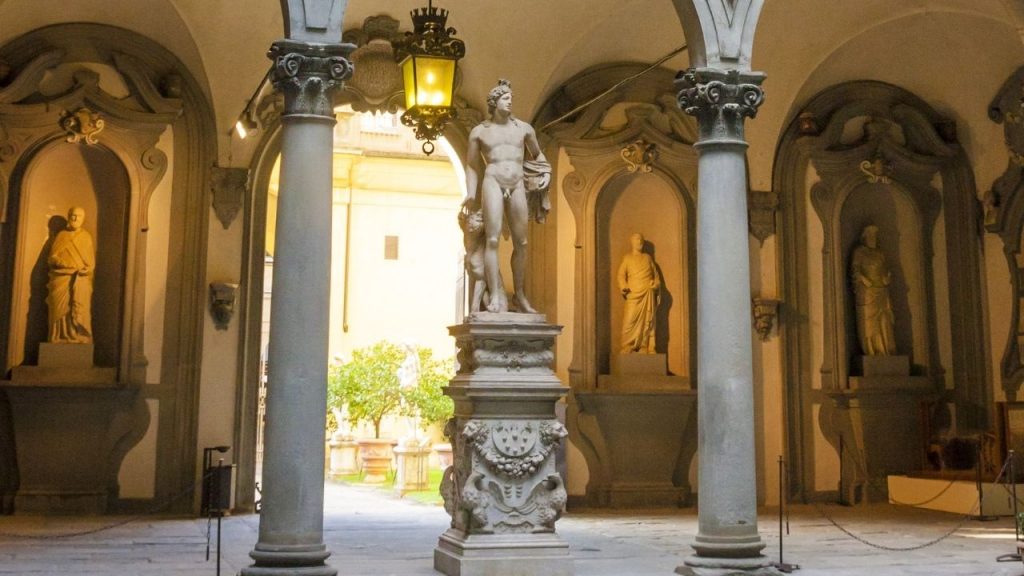
Everything here is from the 14th century, which means it is 600 years old. If you want to sit and watch the passing people, you can sit on the stone benches surrounding the building. And if you want to touch a 600-year-old thing, you can put your hand on one of the stone blocks, “strong rock” (pietra forte).
The Medici family, at least the first generation, lived here. The old Cosimo, the father of the family, built the palace. His son Piero, and grandson Lorenzo, known as the Magnificent Lorenzo, also lived here. Lorenzo was perhaps one of the most important members of the family. He was not only a good leader but also a patron of artists. Michelangelo was among the artists he sponsored. The famous Michelangelo lived in this building under the wing of Lorenzo il Magnifico when he was still a child. Thanks to the protection of the Medici, he began his art career and learned to paint and sculpt here.
The palace courtyard has quite a beautiful design, with elegant classical columns and arches, carvings on the walls, and delicate scripts… The Medici Palace is now a public building and is also the administrative building of Florence. There are administrative offices and a museum in the building. You can also visit the apartments where the Medici lived during your visit.
Duomo
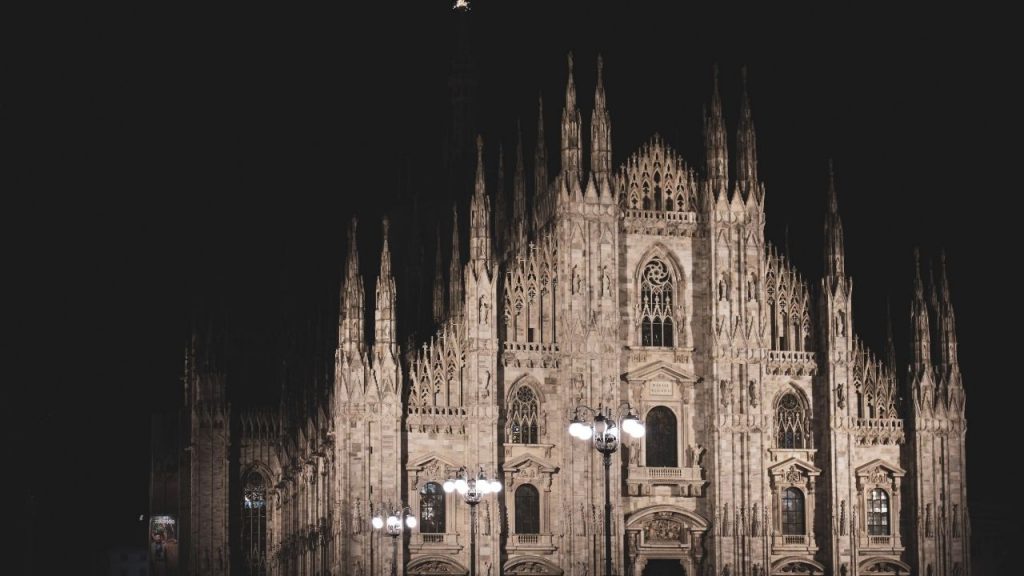
This is one of the most popular and iconic places in Florence. The word Duomo means “home”. In Italy, the Duomo is the city’s most important church. The view from the top is truly amazing. However, keep in mind that you need to climb 463 steps to get to the top. The secret of Brunelleschi’s dome is its brick structure. The interlocking bricks create an architectural support similar to a fish spine. This structure still holds the title of the largest brick dome in the world, including Saint Peter’s, and has inspired many other domes.
Baptistery of San Giovanni: Gates of Heaven
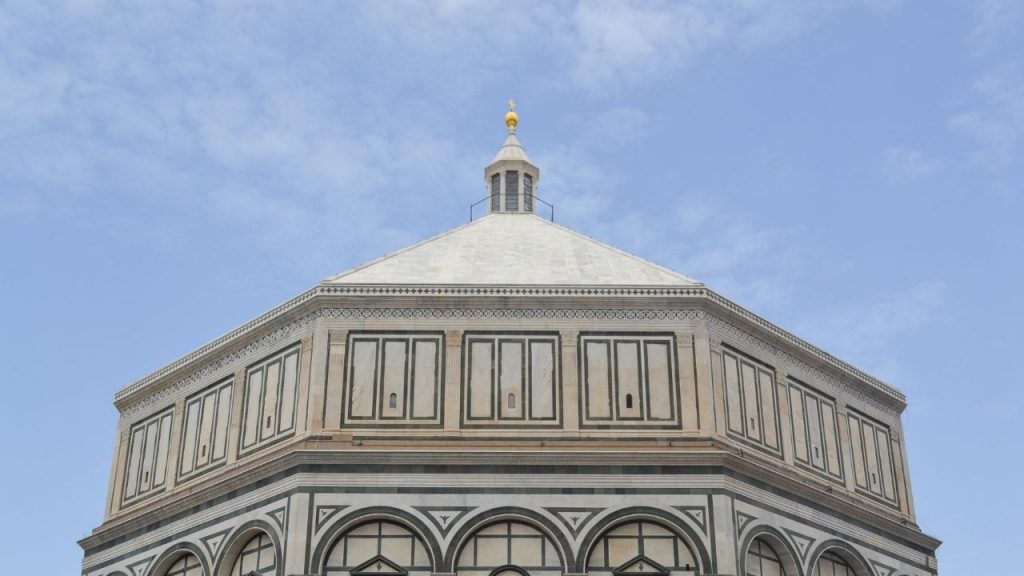
As its name implies, the building was constructed for the Catholic mass of baptism. The baptistery, built in the 11th century, has two stones: white and green marble. This type of ornate style, which is often found in religious structures, reflects the traditional Roman style. The shape of the building is octagonal, which is common in Italy. However, there are other baptisteries in the country that are circular in shape.
The baptistery has three doors, but you must examine the door facing the cathedral closely. This door is a rare work of art that completely changes the concept of art. Michelangelo named this door the “gates of heaven” because he said, “These doors are so beautiful that if there are gates to heaven, they must be like this.” We can also call these doors the Renaissance doors because it was one of the first Renaissance works to emerge in Florence. The artist who created these beautiful doors was Lorenzo Ghiberti.
Explore Florence in a more detailed and enjoyable way with your digital tour guide Piri so that you won’t miss any unexplored places!
Since you are here, what about discovering the charm of Dublin too? 😊

